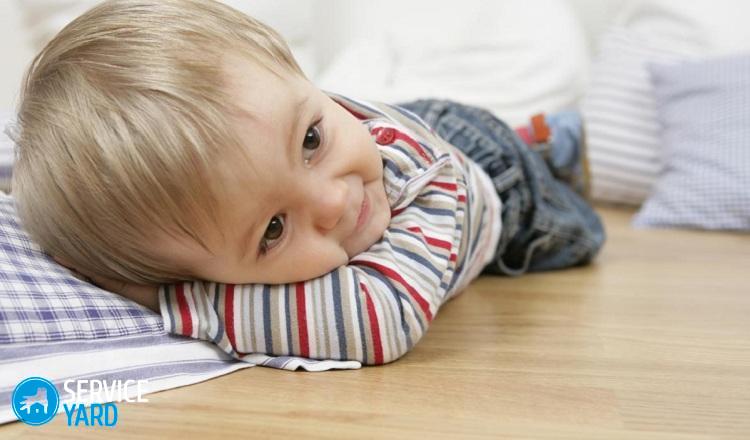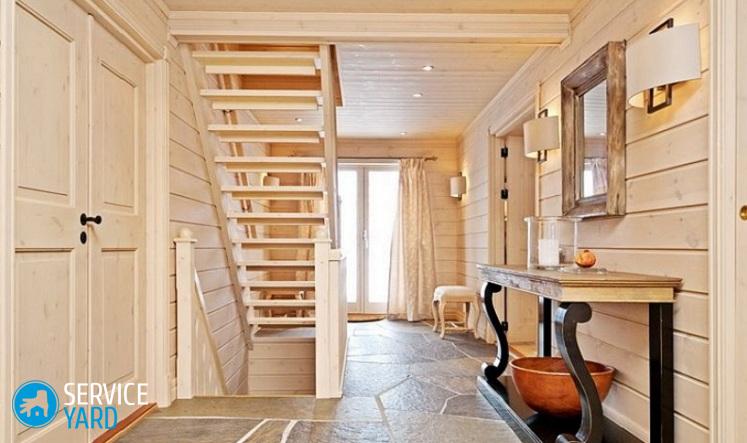Which warm floor is better?

Underfloor heating is a popular construction trend these days. And it's very easy to guess why. It’s cold in winter, heating is turned on late, but I want the house to be warm and cozy. Now there are so many different offers on the market that before buying you definitely need to know which warm floor is better. Consider all the varieties, with all their advantages and disadvantages.
to contents ↑Types of underfloor heating
Such a heat source is very convenient. The heat that it produces heats the entire room completely. In addition, both water and electricity can be used for heating.
All of them have advantages that are presented:
- The uniformity of heating the room;
- Full autonomy;
- Comfortable conditions.
Water floor heating
This option is very popular, since it can be equipped not only in a building under construction, but also in a finished house.
Important! Using such an effective system, about ten percent of the heat resources can be saved monthly.
This option is very simple: a special flexible pipe is installed on the surface. The pipe is designed to circulate hot water. Water, in turn, comes either from a central heating system, or from a gas boiler.
Important! It is better to choose the option with a gas boiler, since in this case the heat in the house will be independent of central heating.
The only caveat is that it will not be possible to design such a system in an apartment of a multi-storey building. By construction standards, this is prohibited, and you will not receive permission from the relevant authorities. And without it, starting work is unacceptable. Therefore, such a warm floor is better exclusively for a summer residence, a private house, a cottage.
Electric underfloor heating
This option is also popular. There are several subspecies of such heating, which differ in the types of heating elements used.
Electric underfloor heating can be:
- Film;
- Pivotal;
- By cable.
In addition, there is a different way of heating:
- Convection;
- Infrared heated floor.
Important! When choosing, it should be borne in mind that self-laying the cable of the IR system is a rather laborious process, and the use of infrared film is prohibited in wet rooms. For large country cottages, the choice of a water heated floor will be most suitable, since it allows you to save a lot.
Film electric floor
To know which warm floor to choose, you need to consider all the options. In such a system, the heater is presented in the form of a film material made in a special way. You just need to lay such a film under the floor covering.
Important! When laying a film warm floor, you do not need to install a special cement screed.
Due to the above properties, installation is very fast, unproductive time losses during construction becomes much less. On this floor you can lay any floor covering. A “clean” floor can be represented by a laminate, parquet or linoleum. The only exception is that tiles and carpets cannot be laid.
Important! If the flooring is made of wood, you need to control that the heating element has an operating temperature of not more than 28 degrees.
Film underfloor heating - which one to choose? This is not the easiest question, because it has two versions: carbon film and bimetal heaters.
The composition of a high-temperature floor with a bimetallic heater includes two heterogeneous layers:
- Aluminum alloy. The composition of the carbon film includes two layers of elements from copper, lavsan and carbon. Typically, such a film is available in the form of a finished roll, which can simply be cut into necessary pieces.
- Alloy of copper and various elements. The core warm floor includes special carbon rods. They need to be laid in a cement screed, decorated with a thin layer. On top of such a floor, any floor covering can be installed: tiles, linoleum, carpet, etc.
Cable floor heating
Here, the heating element is represented by a special cable that looks like a simple cable bay or finished heating sections. It is based on a typical two-core or single-core cable.
to contents ↑Important! A cement screed can be mounted on the heating cable, but it can be omitted for heating mats.
Pros and cons of underfloor heating
We will touch upon a few more nuances of arranging such a system.
Water
For the arrangement of a warm floor, metal-plastic pipes are used, which are filled with hot water. This acquisition is quite economical. In order for water from the collector to enter the pipes, a special pump is used. The advantages of such heating, as already mentioned, are efficiency.
Important! Compared to electricity, using water can save energy by sixty percent. This will be especially noticeable on the example of a country cottage.
The materials used to make the pipes are quite durable, which makes the entire system even more reliable. In addition, the range of floor coverings when using a water floor is much wider.
Even the best warm floors have their drawbacks. The main disadvantage of water in this case is that you need to purchase and install a special circulation pump. Otherwise, it is impossible to regulate the temperature.
Important! Due to the installation of the pump, a pressure drop in the general water supply system is possible.
Electric
If you use an electric cable, then additional equipment is not required. In this heating there is a temperature regulator, so it is possible to control the optimal temperature in the room. Thanks to it, energy can also be saved, since power can be easily reduced.
to contents ↑Important! The main disadvantage is the significant consumption of electricity, which leads to additional costs. In addition, some types of coatings are deformed by high temperatures.
We mount a water heat-insulated floor
After you have decided which warm floor is better to choose, you need to deal with its installation.
Important! Before mounting the heating system, carefully prepare the surface. It is necessary to get rid of dust and level the base. Differences should not exceed 5 mm.
Installation of concrete system
This option, in which the base and distribution layer is represented by a cement-sand screed, is very popular:
- Pre-leveled concrete surface is covered with a layer of waterproofing coating.
- We put thermal insulation on it.
- We lay and fasten the heating pipes.
Important! If the room is large, then use a reinforcing mesh when laying pipes. In a small area, special plastic brackets, fixing strips or dowel hooks are used to secure the pipes.
- Fill the bearing layer, which consists of a sand-cement mixture and a plasticizer.
- We lay the floor covering.
Warm floor under porcelain tile - which is better? It is this one. In addition, it is suitable for ceramic tiles, decorative stone, laminated parquet.
Installation of polystyrene system
In this case, special heat-insulating polystyrene plates are used. They look like convex circles, their diameter is small. At the edges they have locks in order to make the grip more reliable. Thus, a monolithic insulating shield is created over the entire surface.
When laying pipes, you do not need to use fasteners. When installing, click on the pipe segment and fix it in the grooves. Then the heat-distributing plates of metal are laid, and after that - the installation of a clean floor covering.
Mounting a wooden system
In this case, the role of the support layer is performed by the edged board, wood board, plywood, MDF:
- The wood plate is cut into narrow stripes. Their width should be equal to 13-18 cm.
- Plates are laid on the base, which is represented by a wooden floor or logs.
- From above, with the help of screws, installation of thermal distribution plates is carried out.
- The omega-shaped grooves that are in the plates are lowered into the recesses located between the plates.
- The heating pipe must be fixed in the grooves. At the same time, fasteners are not used.
- After laying the pipes, the entire surface is covered with a film of polyethylene.
- As a heat-distributing layer and the basis for flooring, GVL sheets are used, which are fixed with self-tapping screws.
to contents ↑Important! In order for the coolant to be distributed along the heating circuits, use a distribution manifold. In the manifold cabinet, the supply and return pipes are connected. For the supply pipe with hot water, the distribution collector is installed, the return pipe is connected to the collector for the cooled coolant.
We mount an electric heat-insulated floor
Of course, the first step is to prepare the foundation. To do this, remove the old flooring, remove the dust, repair the defects with a self-leveling mixture. Further:
- We make laying of heat-insulating material. It should be foamed, with a metallized base, at least three millimeters thick. We lay the insulation on double-sided tape with the side down with foil. To connect the pieces of insulation we use ordinary tape.
- We install the thermostat in the mounting box, which is prepared in advance.
- We carry out the summing up to the grounding box and the power cable.
- We are preparing a groove through which the connection to the heating cable will take place.
- We lay the reinforcing mesh.
Important! If heating mats are laid, there is no need to lay a reinforcing mesh.
- We draw the layout of the heating elements. Be sure to note the location of heavy furniture.
- Repeat the pattern on the floor. To do this, use bright tape.
- We carry out cable laying along the marking lines. He should not bend.
Important! A special tape or clip-on tape is used to connect the cable and the reinforcing mesh
- We connect the heating cable, power cable and thermal sensor.
- We put the corrugated pipe at the junction, then we lay it between the rows of cable.
- Perform a cable resistance test.
- We connect the cable and the thermostat.
- From above we mount a coupler four to five centimeters thick.
- We mount a floor covering.
Stock footage
Warm flooring is a very effective heating system, but only with the right choice of variety and taking into account the functionality of the room. No less important is the choice of the manufacturer, so equipping the climate system in your home, consider all the nuances. The main ones we have uncovered in this article.
- How to choose a vacuum cleaner taking into account the characteristics of the house and coatings?
- What to look for when choosing a water delivery
- How to quickly create comfort at home - tips for housewives
- How to choose the perfect TV - useful tips
- What to look for when choosing blinds
- What should be running shoes?
- What useful things can you buy in a hardware store
- Iphone 11 pro max review
- Than iPhone is better than Android smartphones



